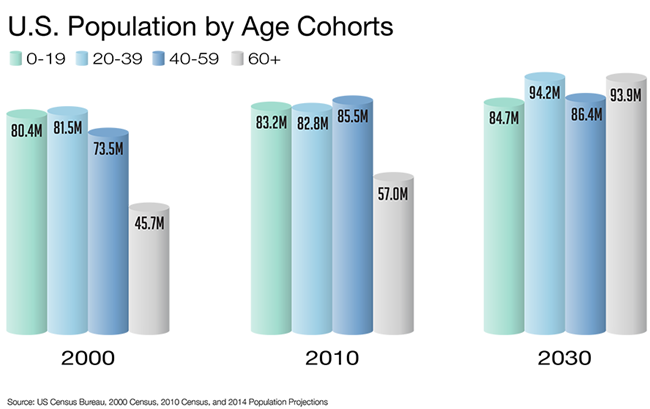Super simple, yet cool Chart of the Day on the graying of America courtesy of the Chmura Economics Blog - let's take a look at the chart then as you continue to demand, some FREE commentary from me...

Wow, check the growth of the 60+ age cohort from 2000 - 2030, amazing how the other segments remain (relatively) flat, while just about everyone else, (you and me too), get a heck of a lot older.
Why should we care about this? A few reasons I think.
1. These general demographic trends combine with observed and predicted workforce composition trends to point to a future where the average worker will be older, will plan on working longer, and where qualified 'new' workers will be even more in demand. If your company is not one where these in-demand younger workers will want to be, then you are going to have to get used to an older workforce than you have had before.
2. How does a relatively older workforce actually translate to HR/Talent programs? Increased need for re-training, as careers lengthen but needed skills continually change, higher reliance on benefits more likely to be used by older workers and less on those that tend to be leveraged by 20 or 30-somethings, and finally a need to be more aware and deliberate about how more widely spread age ranges can effectively work together.
3. Deeper in the Chmura data, they break down this 'aging effect' by US state/county, (I was not able to embed the map here, but you should click through to check it out). As you might expect, the effects of the aging population/workforce composition will differ by locality. You might want to pinpoint the county(ies) that your organization has set up shop in order to get a feel for how quickly and how pronounced the aging effect is expected to be where you need to recruit and retain.
Bottom line, it is probably a good idea to be aware of the big shifts in demographics, at least until you have figured out a way to replace all of your workers with robots.
And looking at how much older we all seem to be getting, you might want to accelerate the robot recruiting sooner than later.